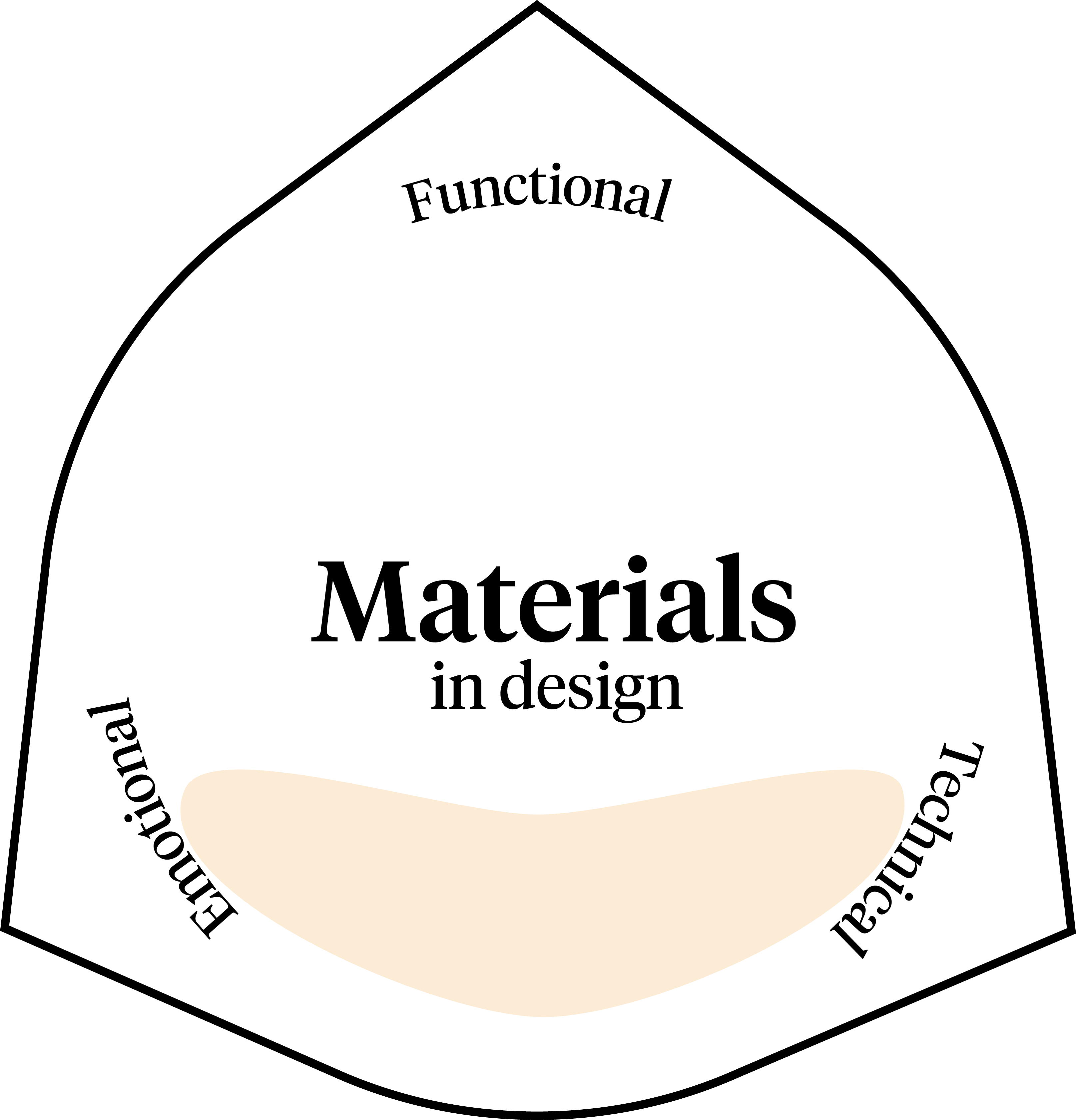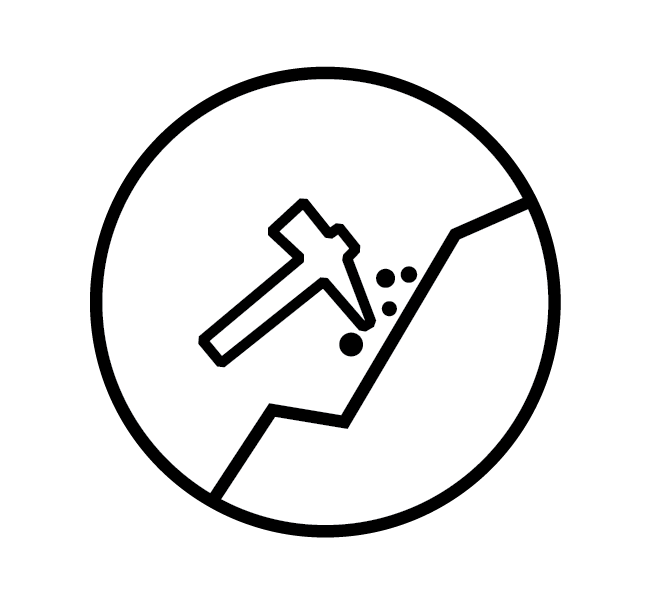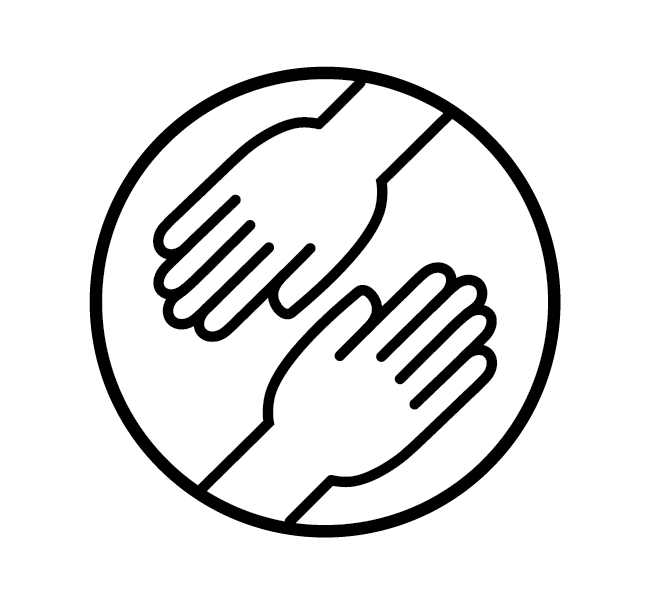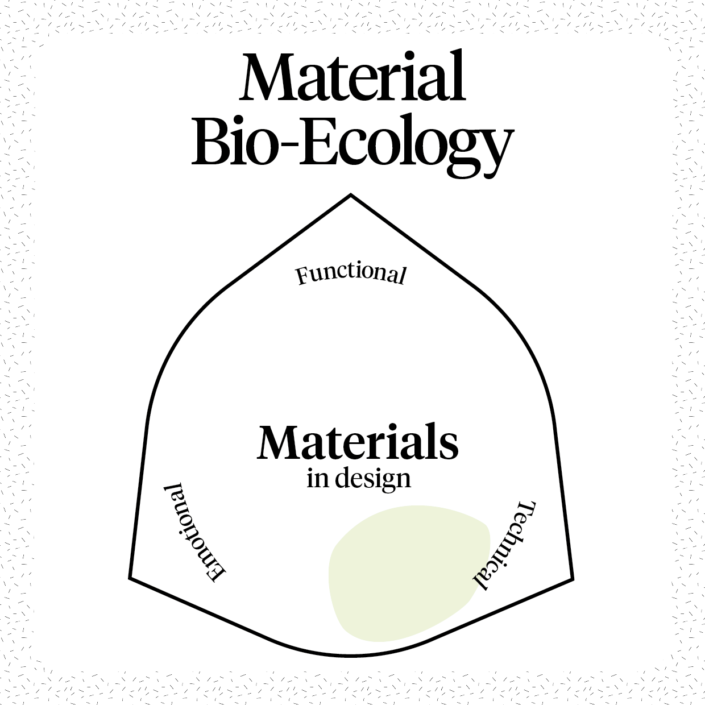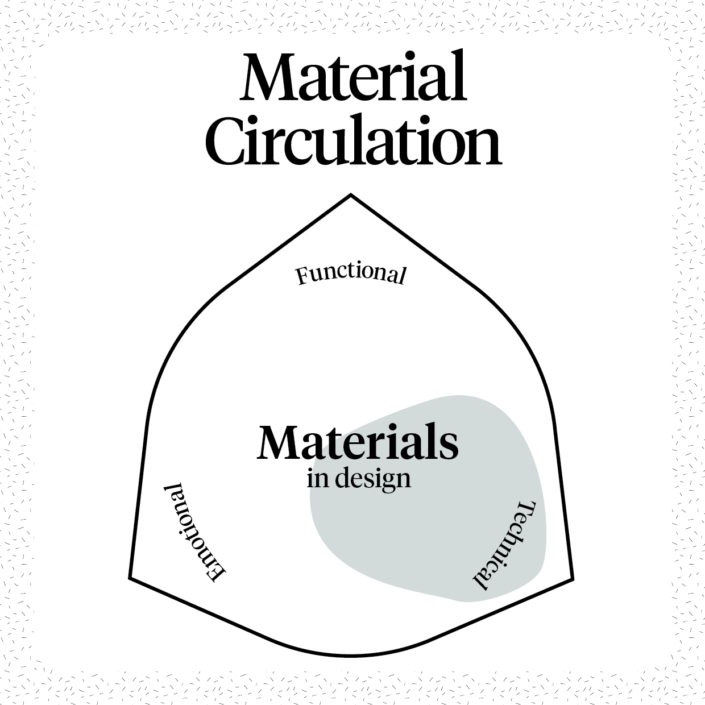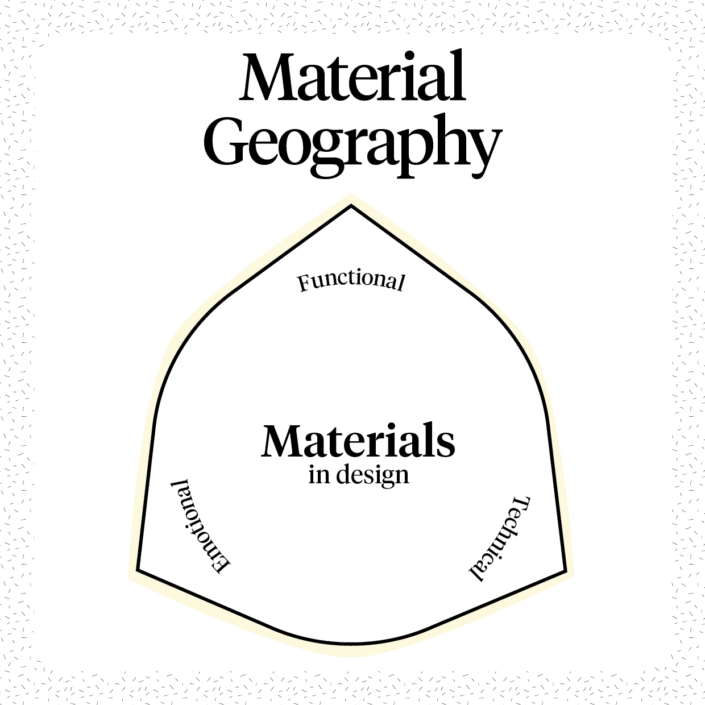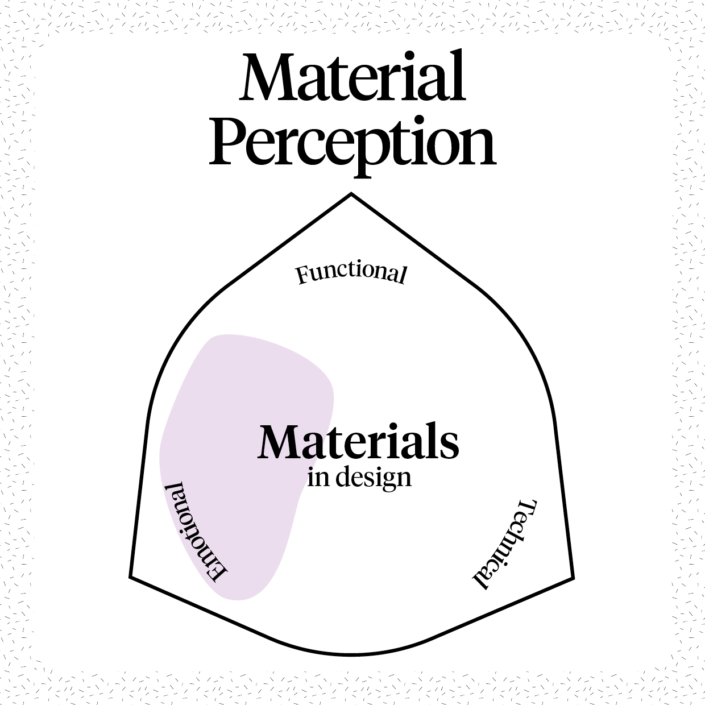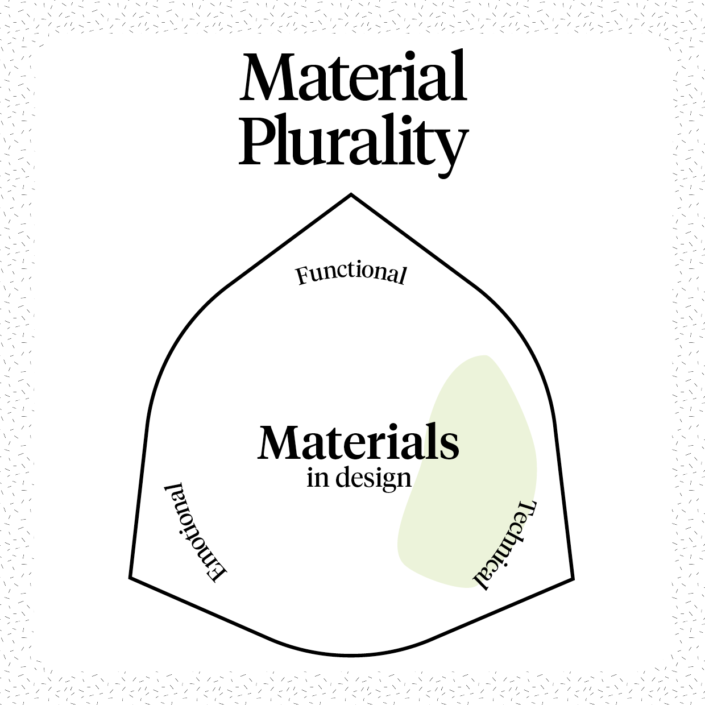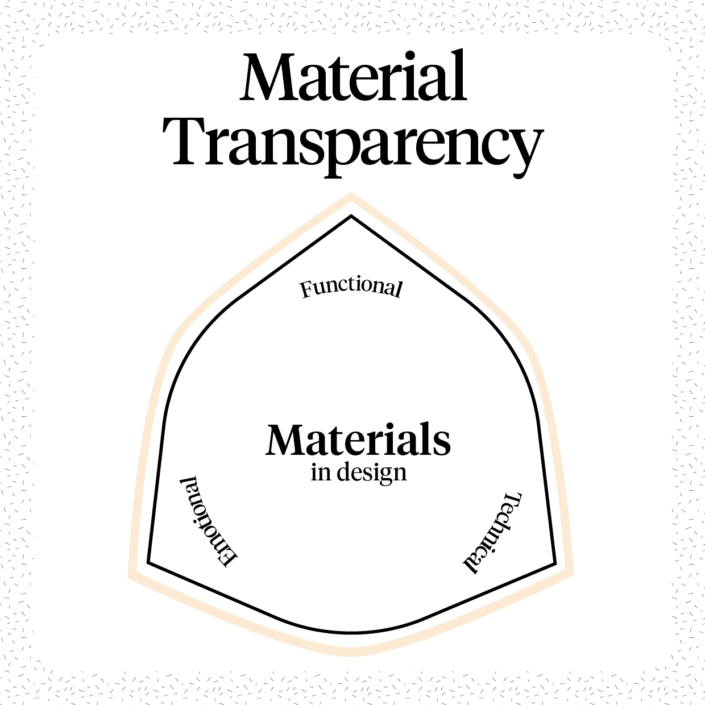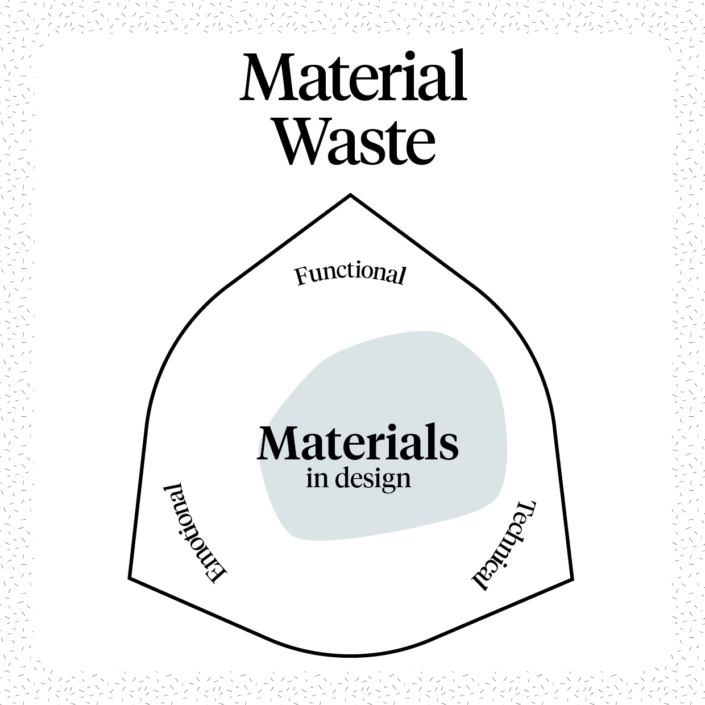What?
Material origin considers how the origin of a material influences its further need for processing and use and how traceable this is in the appearance of the material. Many materials of both organic and inorganic origin are sourced directly from nature, such as cork harvested from cork oak trees and granite mined from quarries.
Why?
Although all materials in some way derive from nature, natural materials are generally subjected to less treatment and processing than man-made materials. Furthermore, familiarity with a material’s origin can enhance emotional connection to an object.
Challenges
- Organic natural materials can undergo fading, yellowing, or embrittlement in response to prolonged exposure to light and heat.
- To grow, harvest and extract natural materials in a way whereby the ecological systems they exist within are sustained.
Examples
- Ana Mestre’s focus on designing living objects in the Portuguese Corque Design project.
- Hemp Bio Leather is a by-product from the hemp, food and agriculture industry in Denmark.
- Fibreshed is an organisation that explores localising the entire growing, making and dyeing process of a garment/textile.
Further Reading
DeMouthe (2006). Natural Materials: Sources, Properties, and Uses. Architectural Press.
Lefteri (2014). Section 1:Grown and Section 3: Mined in: Materials in Design. Laurence King Publishers, pp. 14-95, 160-241.
Mestre (2014). Cork Design: A Design Action Intervention Approach Towards Sustainable Product Innovation (PhD dissertation). Delft University of Technology.

